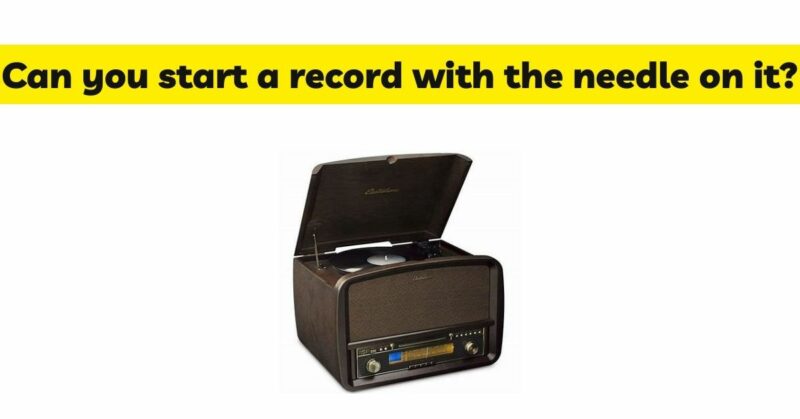Operating a record player is an art form that involves various techniques and considerations to ensure an optimal listening experience. Among the many aspects of playing vinyl records, a question that often arises is whether it is possible or advisable to start a record with the needle already on it. In this article, we will explore the arguments on both sides of the debate, examining the potential impact on sound quality, record longevity, and the overall enjoyment of vinyl playback. By understanding the factors involved, you can make an informed decision regarding the best approach for starting your records.
- The Case for Starting with the Needle on the Record: Advocates of starting a record with the needle already on it argue that it provides convenience and quick access to the music. This approach eliminates the need to lift the needle, find the desired starting point, and lower it onto the record. It allows for immediate engagement with the music and a more seamless listening experience.
- Preserving Sound Quality: Proponents of starting with the needle on the record contend that it has no significant negative impact on sound quality. They argue that modern turntables and cartridges are designed to handle the engagement process smoothly, without causing any noticeable distortion or degradation in sound. With proper turntable setup and calibration, starting with the needle on the record can result in a faithful and enjoyable audio reproduction.
- Reducing Wear and Tear: Starting a record with the needle on it can potentially minimize wear and tear on both the stylus and the record. Advocates of this approach argue that by eliminating the repeated lifting and lowering of the needle, you reduce the risk of accidental scratches or damage to the grooves. This cautious approach helps preserve the integrity of the stylus and the record’s surface, extending their lifespan.
- Conserving Record Life: Vinyl records are delicate and susceptible to damage, and proponents of starting with the needle on the record argue that it contributes to the preservation of the record’s condition. By avoiding the repetitive engagement process, you minimize the risk of accidental mishaps that can result in scratches or groove damage. This approach ensures that the record remains in a better condition for prolonged enjoyment.
- The Case for Engaging the Needle Manually: On the other side of the debate, some argue that engaging the needle manually provides greater control and minimizes potential sound quality issues. They contend that starting with the needle on the record can introduce unintended noise or disturbances during the initial rotation. By manually engaging the needle, you have more control over the positioning and can ensure a cleaner audio signal from the beginning.
- Minimizing Potential Disturbances: Advocates of manually engaging the needle argue that it helps eliminate any potential disturbances that may occur when the stylus lands on the record’s surface. By starting with the needle off the record and manually lowering it, you minimize the chances of encountering dust particles, static electricity, or any surface imperfections that may affect sound quality. This approach allows for a cleaner engagement, resulting in a more pristine audio reproduction.
- Considering Turntable Design and User Preference: The decision of whether to start a record with the needle on it or manually engage it depends on the specific characteristics of your turntable and your personal preferences. Some turntable models offer automatic start functions, allowing for engagement with the needle already on the record. However, other turntables require manual engagement, providing more control over the process. It is crucial to consider the manufacturer’s recommendations and guidelines specific to your turntable model to determine the most suitable approach.
- Other Factors to Consider: While the engagement technique is an important consideration, other factors also contribute to sound quality and record preservation. Proper record handling, regular cleaning of both the stylus and vinyl, appropriate turntable setup and calibration, and the use of high-quality cartridges and styli all play a significant role in the overall performance and longevity of your records.
Conclusion: The decision of whether to start a record with the needle on it or manually engage it is subjective, influenced by turntable design and personal preference. Advocates of starting with the needle on the record highlight convenience and the potential preservation of sound quality and record condition. Conversely, proponents of manually engaging the needle emphasize greater control and the reduction of potential disturbances. It is essential to consider the manufacturer’s recommendations, the specific characteristics of your turntable, and your personal preferences when making this decision. By striking a balance between convenience, sound quality, and record preservation, you can determine the best approach for starting your records and enjoy the beauty of analog music playback to the fullest.


